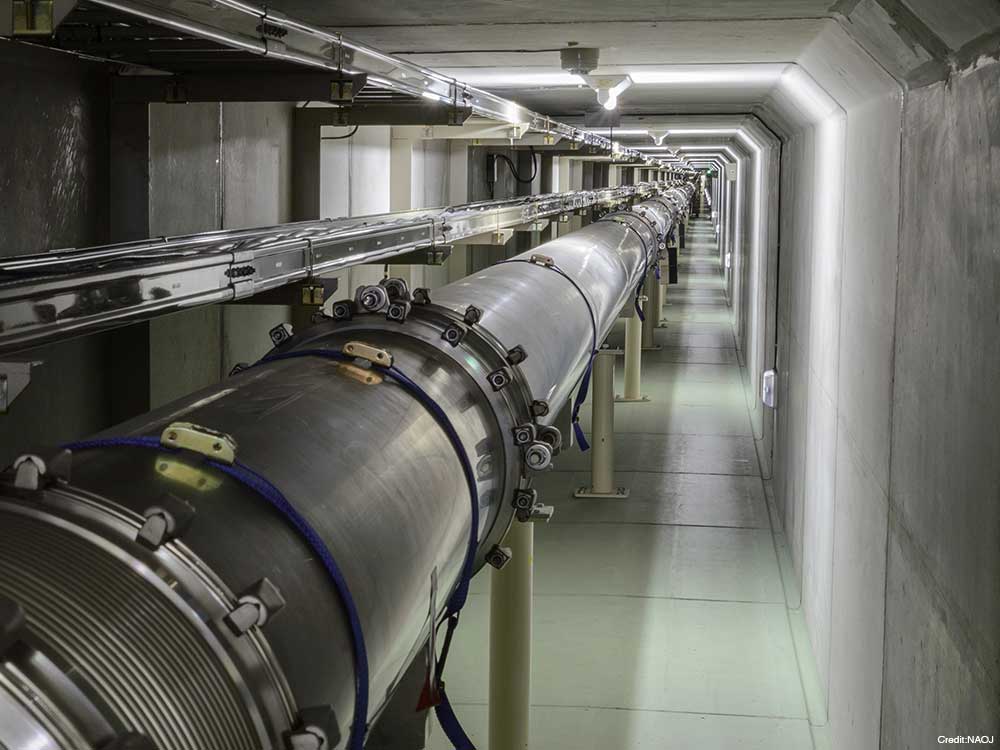What is the interferometric gravitational wave antenna TAMA300?
TAMA300 is an interferometric gravitational wave telescope with a 300-meter baseline, constructed in 1995 at the Mitaka Campus of the National Astronomical Observatory of Japan (NAOJ). As a first-generation gravitational wave telescope, TAMA300 was completed ahead of its counterparts in Europe and the United States. It achieved the world’s highest sensitivity at the time and was the first large-scale interferometric telescope to successfully conduct long-term observational runs.
Although it no longer functions as an active gravitational wave telescope, TAMA300 remains a globally valuable facility for technology development. It continues to serve as a testbed for research related to the Large-scale Cryogenic Gravitational Wave Telescope KAGRA and future telescopes. For example, in 2020, it achieved the world’s first demonstration of frequency-dependent squeezing—a quantum optics technology—in the practical detection band.
TAMA300 continues to play an active role in advancing interferometric telescope technology through joint development research with universities and research institutions in Japan and around the world.

Specifications
| Location | Mitaka Campus (Osawa, Mitaka, Tokyo, JAPAN) |
|---|---|
| Detector | Laser interferometer (Michelson interferometer) |
| Baseline length | 300 meters |
History
| 1995 | Construction of TAMA300 begins at the Mitaka Campus. |
|---|---|
| September 1999 | Start of observational operations. |
